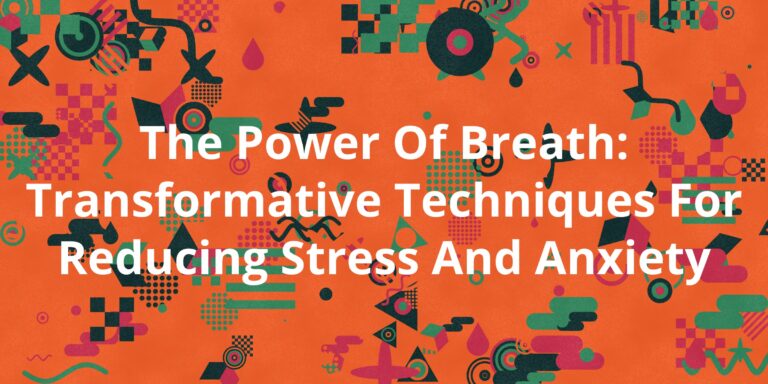Mastering breath control is an essential skill that can greatly enhance our overall well-being, energy levels, and focus. Breath is the foundation of all life, and by mastering it, we can unlock its full potential to improve our physical and mental health. In this article, we will explore the secrets to mastering breath control, including the science behind it, practical techniques for developing breath awareness, and how to use breath control to boost energy and focus.
The Science Behind Breath Control
Breath is a complex process that involves the inhalation of oxygen and the expulsion of carbon dioxide through the lungs. The human body requires a constant supply of oxygen to function properly, and the lungs are responsible for providing it. During inhalation, air enters the nose or mouth and travels down the windpipe, passing through the vocal cords and into the bronchi and lungs. Once inside the lungs, air is absorbed by the alveoli, where it diffuses through the bloodstream to the rest of the body.
During exhalation, carbon dioxide leaves the body through the lungs, traveling back up the windpipe and out through the nose or mouth. The process of breathing is regulated by the respiratory center in the brainstem, which receives input from chemoreceptors in the bloodstream that sense the levels of oxygen and carbon dioxide in the body. When these levels become too low, the respiratory center signals the body to take a breath, and when they become too high, it signals the body to exhale.
Breath control is the ability to consciously regulate our breathing pattern, either by slowing it down or speeding it up. This can have profound effects on the body and mind, as we will see in the next section.
Practical Techniques for Developing Breath Awareness
The first step in mastering breath control is to develop breath awareness. This involves paying attention to our breathing pattern, noticing how it feels in the body, and becoming aware of any changes or sensations that arise during the process. There are several techniques for developing breath awareness, including:
1. Mindful Breathing: This is a simple technique that involves focusing on the sensation of the breath as it enters and leaves the body. It can be practiced sitting or lying down, with the eyes closed or open. Start by placing your attention on the sensation of the breath at the tip of your nose or in your chest. As thoughts arise, gently acknowledge them and return your focus to your breath.
2. Diaphragmatic Breathing: This technique involves breathing deeply into the diaphragm, which is a large muscle located below the lungs. During inhalation, the diaphragm expands, filling with air and causing the chest and abdomen to rise. During exhalation, the diaphragm contracts, pushing the air out of the lungs and causing the chest and abdomen to fall. This technique can help to slow down the breathing pattern and increase oxygen intake.
3. Alternate Nostril Breathing: This technique involves alternating nostrils as you breathe in and out. Start by placing your right index finger on your left nostril, closing it off, and taking a deep breath through your right nostril. Then switch sides, placing your left index finger on your right nostril and taking a deep breath through your left nostril. Continue alternating nostrils as you breathe, focusing on the sensation of the breath in each nostril.
These are just a few examples of techniques for developing breath awareness. There are many others, including Ujjayi breathing, which involves exhaling through a narrowed throat to create a humming sound, and Kapalbhati breathing, which involves forcefully expelling air from the lungs through pursed lips.
How to Use Breath Control to Boost Energy and Focus
Once you have developed breath awareness, you can begin to use it to boost your energy levels and improve your focus. Here are a few tips:
1. Use Slow, Deep Breathing: When you need to calm your mind and relax your body, try slow, deep breathing. This technique helps to slow down the heart rate and blood pressure, reducing stress and promoting relaxation. It can also help to increase oxygen intake, which can improve focus and mental clarity.
2. Use Rapid, Shallow Breathing: When you need to increase your energy levels and boost your focus, try rapid, shallow breathing. This technique helps to increase the heart rate and blood pressure, promoting alertness and concentration. It can also help to reduce stress and anxiety, which can interfere with focus and productivity.
3. Use Alternate Nostril Breathing: Alternate nostril breathing can be particularly effective for boosting focus and reducing stress. This technique helps to balance the left and right hemispheres of the brain, promoting mental clarity and calmness. It can also help to improve sleep quality, which is essential for overall well-being and productivity.
4. Use Breath Control During Meditation: Breath control is an important component of many meditation practices, including mindfulness meditation and Vipassana meditation. By focusing on the breath during meditation, you can develop greater awareness of your thoughts and emotions, as well as cultivate a sense of inner peace and calmness.
Conclusion
Mastering breath control is an essential skill that can greatly enhance our overall well-being, energy levels, and focus. By developing breath awareness through techniques such as mindful breathing, diaphragmatic breathing, and alternate nostril breathing, we can unlock the full potential of our breath to improve our physical and mental health. Whether you are looking to reduce stress, increase energy levels, or improve your focus, breath control is a powerful tool that can help you achieve your goals. So why not try incorporating some breath control practices into your daily routine today and see how it can transform your life?



